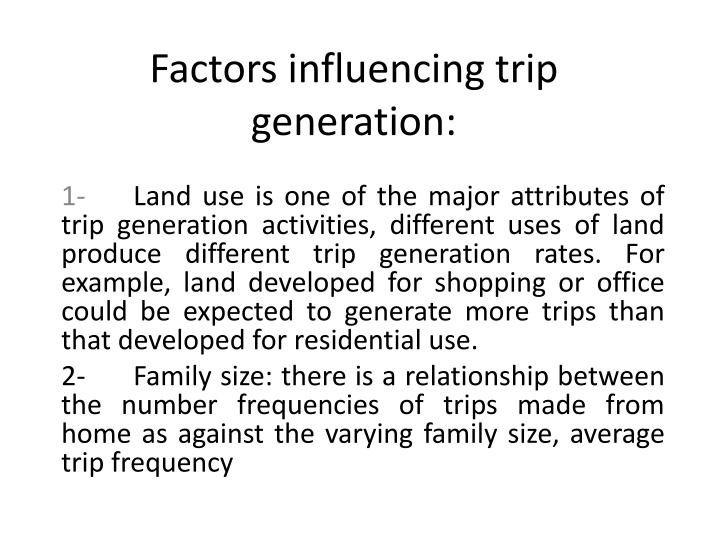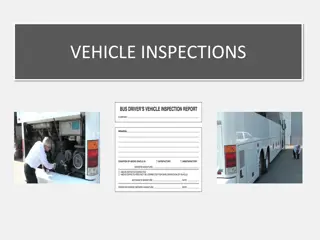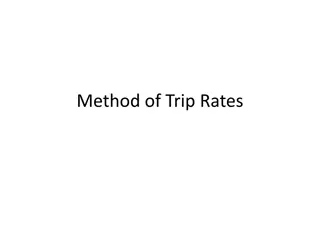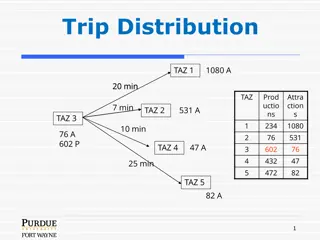Factors Influencing Trip Generation and Analysis Methods
Trip generation is influenced by factors such as land use, family size, auto ownership, and family income. Methods like cross-classification and regression analysis are used to analyze and estimate trip productions. Developing trip generation curves from household data helps understand the relationship between trips, income, and auto ownership.
Download Presentation

Please find below an Image/Link to download the presentation.
The content on the website is provided AS IS for your information and personal use only. It may not be sold, licensed, or shared on other websites without obtaining consent from the author.If you encounter any issues during the download, it is possible that the publisher has removed the file from their server.
You are allowed to download the files provided on this website for personal or commercial use, subject to the condition that they are used lawfully. All files are the property of their respective owners.
The content on the website is provided AS IS for your information and personal use only. It may not be sold, licensed, or shared on other websites without obtaining consent from the author.
E N D
Presentation Transcript
Factors influencing trip generation: 1- trip generation activities, different uses of land produce different trip generation rates. For example, land developed for shopping or office could be expected to generate more trips than that developed for residential use. 2- Family size: there is a relationship between the number frequencies of trips made from home as against the varying family size, average trip frequency Land use is one of the major attributes of
increases with the increasing persons per household at the rate approximately 0.8 trips per day for each additional person. 3- Auto ownerships: increased auto ownership generates more trips per household 4- Family income: families with high income generally perform more trips than the low income household.
To illustrate the trip generation process, three methods are considered: 1- Cross-classification (category analysis) 2- Regression analysis, which has been applied to estimate both trip productions and attractions. 3- Method of trip rate
Cross-Classification method It is a disaggregated analysis, based on individual sample units such as persons, households. Cross-classification is a technique developed by the Federal Highway Administration (FHWA) to determine the number of trips that begin or end at the home. The first step is to develop a relationship between socioeconomic measures and trip production. The two variables most commonly used are average income and auto ownership.
Example 1: Developing Trip Generation Curves from Household Data A travel survey produced the data shown in Table, Twenty households were interviewed. The table shows the number of trips produced per day for each of the households (numbered 1 through 20), as well as the corresponding annual household income and the number of automobiles owned. Based on the data provided, develop a set of curves showing the number of trips per household versus income and auto ownership.























